Table of contents
The turnip ( Brassica napus subsp. rapifera) can be eaten raw - preferably in organic quality - in salad or eat cooked as a stew, casserole, puree or soup.
Use of the turnip in the kitchen:
The turnip ( Brassica napus Swede (German: subsp. rapifera) is a turnip-producing subspecies of the species rapeseed ( Brassica napus), which most likely arose from a cross between cabbage ( Brassica oleracea) and turnip rape ( Brassica rapa). 1 Both the roots and the leaves of the swede are edible. The white to yellowish flesh of the turnip has a tart, earthy and sometimes slightly bitter taste when raw, and a pleasantly sweet taste when cooked, reminiscent of parsnips or kohlrabi. Swedes easily take on the taste of other ingredients when cooked - so they can quickly taste like their frequent cooking partners such as celeriac, kohlrabi, carrots or apples.
Can you eat swede raw? Swedes can be eaten raw, but they can also be used for cooking, frying or baking. In most cases, they need to be peeled with a vegetable peeler before being grated or cut into slices, cubes or sticks. They are mainly used raw in salads, grated or thinly sliced. They are highly recommended with apples or oranges. But a raw swede salad also tastes wonderful with raisins, pineapple or mango and a sweet dressing.
However, swedes are more often eaten cooked. The simplest ways to prepare them are to briefly cook them in salted water and to fry sliced swedes - both of these results make a good vegetable side dish. They are particularly popular in stews (e.g. with potatoes or lentils), casseroles (e.g. with apples, zucchini and walnuts) and soups (e.g. with parsnips or kale, or with apples and peanut butter). Also try the fruity, hearty swede stew with white beans. Purees (e.g. mixed with potatoes, carrots and onions) are also popular in Scandinavia and the Netherlands. Swedes can also be prepared in a similar way to potatoes. They can be fried into chips, made into rösti - often with sweet potatoes - or made into a "fake" potato salad. Turnips also taste excellent in curries or on quiches. Stuffed turnips cooked in the oven or vegan, breaded turnip schnitzels are other recommended preparation ideas. Turnips can also be used to make jam or puree - mixed with apples or pears.
Salt,pepper and nutmeg bring out the taste of the turnip particularly well. Preparation with exotic spices such as curry, turmeric, caraway or allspice is also recommended, as is sesame, apple juice and herbs such as coriander, parsley, chives, rosemary or thyme.
Recipe for vegan turnip and carrot salad:
Ingredients (for 4 people): 500 g raw turnips (organic), 400 g carrots, 1 apple, 50 ml apple juice (naturally cloudy), juice of one lemon, 1 tbsp rapeseed oil, 1 tsp agave syrup, some salt and pepper.
Preparation: Peel the turnips and carrots. Peel and core the apple. Coarsely grate the turnips, carrots and apple using a food processor or kitchen grater and place in a bowl. Add the apple juice, half of the lemon juice, oil and agave syrup and mix well. Add more lemon juice to the vegan turnip and carrot salad if necessary and season with a little salt and pepper.
Vegan recipes with swede (raw) can be found under the note: " Recipes that have the most of this ingredient ".
| Not only vegans or vegetarians should read this: Vegans often eat unhealthily. Avoidable nutritional errors. |
Shopping - where to buy?
Swedes (raw) are not often available in stores. Only a few supermarkets (e.g. Rewe, Edeka) sell swedes. Most supermarkets (e.g. Coop, Migros, Denner, Volg, Spar, Aldi, Lidl, Hofer) and even organic supermarkets (e.g. Alnatura, Denn's Biomarkt) only occasionally or never stock them. They are most likely to be found at weekly markets or farm shops during the season, which in the DA-CH region lasts from October to spring. When buying swedes, look for ones with a smooth, plump skin without any damage. Smaller ones are also preferable as they taste more tender and fresher.
If you can't find turnips, you can alternatively use turnips, kohlrabi, celeriac, parsnips or carrots, depending on the recipe.
Storage:
Unwashed turnips will stay fresh for two to three weeks in the vegetable compartment of the refrigerator. If you want to extend their shelf life, you can either store them in a dry, dark and cool cellar compartment without leaves for up to six months, or briefly blanch them and keep them in the freezer for eight to ten months. Of course, the vegetables still taste best when fresh.
Swede: Ingredients - Nutritional values - Calories:
The energy content of the swede (raw) is only 37 kcal per 100 g. It does not contain much fat at 0.16 g/100 g. How many carbohydrates are in the swede? There are 1.1 g of proteins and 8.6 g of carbohydrates per 100 g. 2
100 g of raw turnips contain 25 mg of vitamin C (ascorbic acid) - that is 31% of the daily requirement. Horseradish (25 mg/100g) and turnips (21 mg/100g) have comparable contents. The yellow bell pepper contains significantly more vitamin C at 184 mg/100g . 2
The raw turnip also contains 305 mg of potassium per 100 g (15% of the daily requirement). Celeriac (300 mg/100g) and cauliflower (299 mg/100g) contain a similar amount. Pulses have particularly high levels of potassium, such as white beans (1,795 mg/100g) and soybeans (1,797 mg/100g) - however, the content is reduced by the cooking process. 2
The folate (folic acid) content in the turnip is 21 µg per 100 g (11% of the daily requirement). This can be compared with that of the Chinese yam (23 µg/100g) and the carrot (19 µg/100g). Here too, some pulses exceed the folate content of the turnip, such as raw chickpeas with 557 µg/100g and edamame (303 µg/100g). 2
The complete ingredients of swede (raw), the coverage of the daily requirement and comparison values with other ingredients can be found in our nutrient tables. In the article Nutrients explained you will get a detailed insight into the topic.
Health aspects - effects:
The swede is a source of polyphenols and glucosinolates. Glucosinolates are sulfur-containing phytochemicals that occur in cruciferous plants (Brassicaceae) and are converted into bioactive isothiocyanates. These have chemopreventive properties against various types of tumors such as pancreatic, liver and colon tumors, but a toxic effect has also been documented in the literature if the dosage is too high. 3 Swedes (roots and sprouts) therefore have an antioxidant activity and have an antiproliferative and proapoptotic effect on tumor cells. 4
Dangers - Intolerances - Side effects:
Excessive consumption of turnips can lead to complaints such as stomach pain and flatulence. Otherwise, no serious side effects are known.
Occurrence - Origin:
It is assumed that the swede originated from a cross between turnip ( Brassica rapa) and cabbage ( Brassica oleracea) - probably in Bohemia in the 17th century. 5 The inexpensive swede is grown in temperate to cold regions such as northern Europe (eg Scandinavia, Great Britain, Germany) and North America (USA, Canada). 3, 4,5
Growing in the garden or as a pot plant:
Swedes prefer humus-rich and loamy soil that is moist and deep, in a sunny to partially shaded location. From the end of May to the end of July, swede seeds can be sown directly in the bed: make seed furrows about 0.5-1 cm deep - and 40 cm apart - and place the seeds about 40-50 cm apart. The seeds can also be sown more densely, but then they must be separated in the dicotyledon stage. The seeds germinate after 7-10 days at a temperature of 15-18 °C. The swedes should then be watered regularly, as they like it moist. If you enriched the soil with compost or organic slow-release fertilizer when planting, no further fertilizer is necessary. 6
Harvesting begins in September at the earliest. Early harvests produce more tender specimens, while later harvests produce larger specimens that are more storable. The turnips can survive moderate frost and short-term temperatures of up to -8 °C, but you should have harvested all the turnips by the end of the year at the latest. 6
Danger of confusion:
Swedes and turnips belong to the same genus ( Brassica), but are two different species. They look similar, but some differences are noticeable. Swedes have thick, smooth, bluish leaves 5, while turnips have thin, hairy, light green leaves. The flesh of the swede is yellowish 5 and that of the turnip is whitish. Swedes are also usually larger, as turnips are usually harvested a little earlier. Swedes taste milder, but also sweeter than turnips.
General information:
The turnip ( Brassica napus subsp. rapifera ) is a subspecies of rapeseed ( Brassica napus ) and belongs to the family of cruciferous plants (Brassicaceae). Since the turnip includes both the stem and the root and hypocotyl, it is botanically a turnip. 1 Its skin color ranges from white to yellow to violet. 5
The turnip suffered from a bad reputation for a long time because it was considered poor man's food and only suitable for emergencies. This idea probably dates back to the time of the First World War when there was a food shortage in Europe and turnips were eaten in an emergency. After that they were dismissed as animal feed. But the turnip has now made its way back into the kitchen, and even into Michelin-starred cuisine. 7
Alternative names:
The turnip has several synonyms, including Kohlrübe, Swedish turnip, Dotsche, Wruke, Butterrübe, Erdkohlrabi, Unterkohlrabi, Untererdkohlrabi and Bodenkohlrabi. What are turnips in Switzerland? In Switzerland, the turnip is called Knutsche.
In English it is called rutabaga, swede or turnip, although the latter term is usually used for the turnip.
There are also several variants of the Latin names: Brassica napus subsp. rapifera, Brassica napus subsp. napobrassica, Brassica napobrassica or Brassica napus subsp. napifera.
Keywords for use:
In some places (e.g. Scotland, Wales, northern and western England, Ireland) turnips are traditionally carved into lanterns on Halloween.
Literature - Sources:
Bibliography - 7 Sources (Link to the evidence)
| 1. | Nutzpflanzenvielfalt.de Die Steckrübe - Gemüse der Jahre 2017/18. |
| 2. | USDA United States Department of Agriculture. |
| 3. | Stefanucci A. Zengin G. Llorent-Martinez EJ. Dimmito MP. Della Valle A. Pieretti S. Ak G. Sinan KI. Mollica A. Chemical characterization, antioxidant properties and enzyme inhibition of Rutabaga root’s pulp and peel (Brassica napus L.). Arabian Journal of Chemistry. 2020;13(9):7078–86. |
| 4. | Pasko P, Bukowska-Strakova K, Gdula-Argasinska J, Tyszka-Czochara M. Rutabaga (Brassica napus L. var. napobrassica) seeds, roots, and sprouts: a novel kind of food with antioxidant properties and proapoptotic potential in Hep G2 hepatoma cell line. J Med Food. 2013;16(8):749–59. |
| 5. | Hort.purdue.edu Rutabaga. |
| 6. | Plantura.garden Steckrübe: Experten-Tipps zu Anbau, Pflege & Ernte des Wintergemüses. |
| 7. | Pini U. Das Bio-Food Handbuch. Ullmann Verlag: Potsdam; 2014: 708-9. |

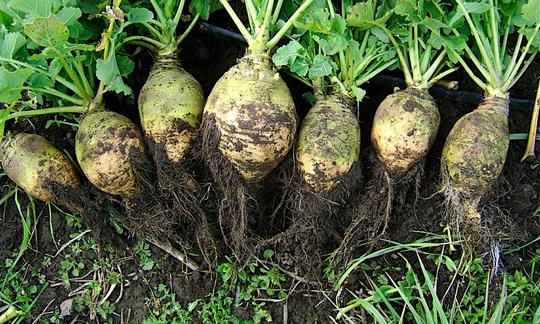

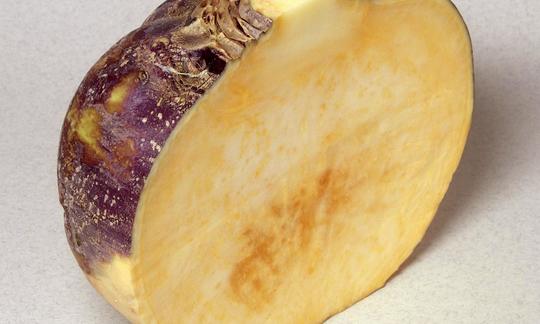

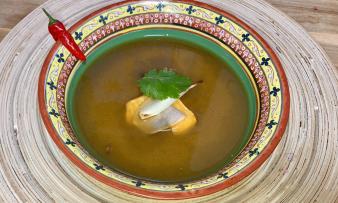
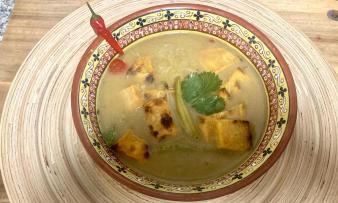
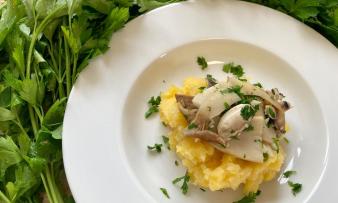





Comments